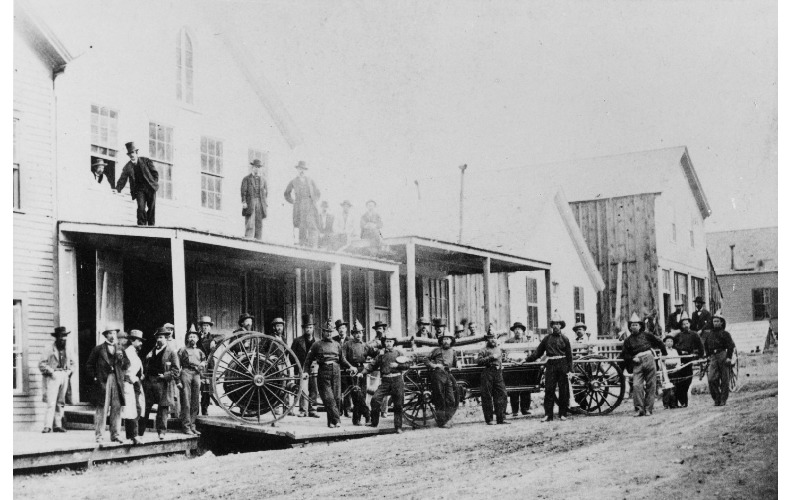Virginia City’s Volunteer Fire Department

The Volunteer Virginia City firemen were heroes in the public eye. They fought fires for a decade, choosing to risk their lives to keep the town, mines and people safe.
The volunteer fire department began with a snowball fight. In 1861, a fire broke out in town. Having no department, no fire-battling equipment, and no organization, townspeople attempted to douse the fire using snowballs. Although their attempts did nothing to discourage the flames, it began the formation of the future Virginia City Volunteer Fire Department. The citizens decided that something needed to change to ensure security for their community. First, a volunteer bucket brigade was formed, followed by a volunteer fire engine company. The Virginia Engine Company No. 1 was the first fire engine company created, quickly followed by the Ladder Company No. 1, in 1861. After creating five more companies, the Virginia City fire department formed in 1866.
The Virginia Fire Department brought men from all walks of life, from well-to-do business men, to those who frequently warmed a bar stool in the local saloons, to serve the community. It was considered an honor to volunteer for the department. The department organized themselves under an informal set of bylaws, hoping to bring order to the rough frontier town. These bylaws were mostly a rule of conduct. Among these rules, firemen were expected to not instigate fights, to perform all duties assigned to them, to obey their commanding officer, to not shirk from their duty, and to always conduct themselves with decorum. However, this did not stop the occasional disagreement that occurred between the men in the department. There was an unspoken rivalry between the various companies, all competing to be the first company to report to the scene of a fire. Often these rivalries got so heated that riots broke out between the men. Even though they had a standard of conduct, they were still rough frontiersmen who solved their problems with fists rather than diplomacy.
However, their popularity had its limits. After the Great Fire of 1875, the volunteer fire department received partial blame for the extensive damage. The public felt that they were ineffective in their methods of protecting the city. The Territorial Enterprise was especially critical of the fire chief, Frank McNair, and the department. They reported, “Toward McNair as a man we bear no malice, but on more than one occasion he has shown his utter incompetency as fire chief…We call upon Mr. McNair to resign…There should be no ill-feeling between the citizens and the firemen, but when the citizens grant every reasonable request of the firemen, they, in return, should respect the reasonable desires of the citizens.” After continual pressure from the press and public, most volunteer fire engine companies had disbanded by 1877. The city officials began hiring a full-time, paid crew and organized a city sponsored fire department. A new building was constructed, as well as hoses installed throughout the city to offer easier access for the firemen. The era of volunteer firemen had passed, but the new fire department received a warm welcome. The Virginia City Fire Department continue to protect the city, and do its duty to serve the public to the present day.
Images


